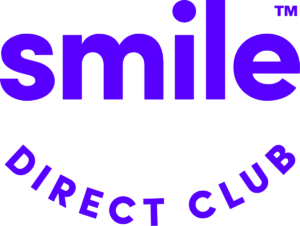If you’ve just received your first set of aligners and are wondering if the treatment will hurt, you’ve come to the correct place. Today, we’ll learn everything there is to know about the difficulty of wearing Invisalign aligners, how long it lasts, and if there is any method to alleviate the pain.
Even if you experience little pain, sticking with your Invisalign treatment is the most important thing you can do to guarantee that your teeth are straightening and you are one step closer to a beautiful smile and straight teeth.
Invisible Braces Quick Comparison
Find out if you’re eligible today
Does Invisalign Treatment Hurt?
No, the simple answer is that Invisalign does not cause pain but may cause moderate discomfort.
The transparent aligners used by Invisalign are meant to gently push your teeth into the proper position. Because your teeth are shifting, you should expect some discomfort, which should subside within a week or so.
This pain or discomfort is relative and is determined by a variety of variables. Some people are just more sensitive and suffer pain when they first begin using clear aligners, whilst others experience no discomfort at all.
The level of pain is also determined by your teeth’ pre-existing condition and the amount of correction required with Invisalign. If there is excessive crowding, you should expect some discomfort when wearing your Invisalign aligners at first.
Why Is Invisalign Uncomfortable?
Clear aligners are custom-made for each person depending on the shape and impression of their teeth. As a result, everyone has their own set of trays that will cure the issues with their teeth and allow them to smile confidently and perfectly.
While the ultimate outcome is spectacular, the procedure is time-consuming, and because the teeth are gently forced into the correct position, some pain and discomfort are to be expected.
This is just the process of physically shifting teeth into a new and straight sequence over time. The good news is that it is all transitory, and the effects are long-lasting.
What does the discomfort of Invisalign feel like?
It may be difficult to describe the pain you may experience when you first begin wearing your Invisalign aligner because everyone’s experiences vary.
This discomfort is commonly described by patients as:
- A toothache in numerous places
- Muscle discomfort
- Throbbing pain in the jaw
- Pain in a one tooth
- Discomfort in the mouth, and so on
The majority of patients find mild pain that seems like the pressure is being applied to their teeth, but there is no extra discomfort. However, some people who are more sensitive or have larger adjustments suffer greater pain and are more likely to abandon aligner trays sooner.
While the discomfort may be too great for some individuals, it is crucial to remember that it is just temporary and that you should always continue to wear your clear aligners since persistence is the key to success.
Taking your aligners off may seem like a good idea when you’re in pain, but in the long run, it’s the worst option since it will take longer for you to get used to the sensation and will lengthen the treatment overall.
How bad is Invisalign pain?
The pain that some users feel is typically regarded as minor, and up to 35% of persons have no discomfort at all. However, according to recent research, around 54% of persons suffer moderate pain.
Overall, this is not considered severe pain because it is readily handled, and most users say that it goes away within a few weeks.
Which is more painful, traditional braces or Invisalign?
Traditional braces are typically more uncomfortable than Invisalign.
Because traditional metal braces put considerably greater pressure on the entire jaw and your teeth, patients generally experience significantly more discomfort when wearing them than when using Invisalign.
Traditional metal braces are not only more uncomfortable but are also more apparent, which is why many individuals choose to utilize invisible aligners. This is especially true for younger generations and teens who prefer the convenience of transparent plastic aligners.
Many people believe that conventional braces work faster, however, this is not fully accurate because Invisalign works just as quickly but with less discomfort.
When do you stop experiencing the mild discomfort of Invisalign?
The first week, according to most patients, is the most difficult since the trays feel extremely tight, causing the greatest pain.
While it may take longer for some, most patients are relieved of their discomfort within a week or two. This may need to be repeated with each new set of aligners since they will be tighter each time, but it will become easier.
Because your teeth are physically shifting in your jaw, some discomfort is to be expected, but the ultimate result is so rewarding that it is well worth it.
What types of pain are not caused by Invisalign?
While we are willing to put up with some pain since the trays are so tight, you should be aware that certain aches are not caused by Invisalign.
If this occurs, you should consult with your orthodontist:
- Extreme sensitivity to cold and hot food and beverages, which was not previously present;
- Pain while eating sweet foods or drinking sugary beverages;
- Intense burning feeling in the mouth;
- Having a taste of blood or other dreadful and unpleasant flavors
Because these events are not known to be caused by clear aligners, you should notify your doctor and get advice on appropriate treatments.
When is the pain something to worry about?
While some discomfort is to be anticipated, extreme pain, bleeding, or fever is all causes for worry. If you have these symptoms together with facial swelling, make an appointment with your doctor as soon as possible.
How to Handle Invisalign Aligners Pain and Discomfort?
We can look at the cures now that we are familiar with some of the aches and pains you may experience as you embark on your road to the ideal smile.
Sticking to the plan and thinking about the final goal will make it easier to get through the early adjustment period.
Here are some suggestions on how to alleviate Invisalign pain:
1. Comply with your orthodontist’s advice
Following the specialist’s recommendations and strategy is one of the most crucial actions you can do to reduce pain and get the greatest outcomes possible. Each patient has their own plan that is tailored to their teeth, so you must listen to their recommendations and keep all appointments on time.
2. Allow some time
Any discomfort you may be experiencing is temporary and will pass. As a result, one piece of advice would be to keep on course and be patient. Most of the pain will fade over time as you grow accustomed to the sensation of plastic aligners in your mouth and they loosen.
Your teeth will improve with time, and you will no longer detect the invisible braces after a week or two. Furthermore, because it is virtually entirely invisible, other people will not see it, allowing you to wear it without feeling embarrassed all of the time.
3. Apply a cold compress
If the pain persists and you believe you require extra assistance, you may always apply an ice pack or compress to ease the soreness. Because we may consider those painful places to be bruised, a cool object, such as ice cubes, should reduce swelling and inflammation and ease the pain for a short period of time.
We should point you that some people respond better to hot compresses than others, so experiment a little to discover the ideal option for you.
4. Avoid eating hard or crunchy foods
When you acquire your aligners and start wearing them, you will experience some stiffness and pain in your teeth, therefore it is best to avoid crunchy foods at first.
This is true for nuts, crackers, and other foods of a similar nature. To avoid further aggravating the tissue, stick to soft foods such as soups and smoothies.
You can resume your usual diet once you’ve gotten acclimated to the sensation of wearing the aligners.
5. Use over-the-counter pain relievers
If you are sensitive and feel discomfort, you may always take some moderate medicine that you can get over the counter. Pain relievers are an excellent approach to alleviate discomfort while getting accustomed to the braces.
It’s also a wonderful method to stay to your strategy and not give up on the aligners.
6. Change to a new aligner at night
Your treatment plan may need you to switch to the following pair of aligners on occasion. The new set of trays will be a snugger fit and may cause some pain and feel uncomfortable. This is why we recommend replacing them at night since you will have a few hours to get acclimated to the sensation.
Like every new pair, this one will be tight for a brief amount of time before you totally forget you have them in.
7. Trim the aligners’ edges
Because it is manufactured from a precise model of the patient’s teeth impressions, the clear aligner is custom-made to suit them exactly. However, even a small excess of plastic can cause irritation when it scrapes against the gums.
If this occurs, carefully cut the extra plastic to better fit. However, large changes should be avoided because they might compromise the whole treatment strategy.
8.Chew an Invisalign Chewie
Chewies are specially made pieces of plastic that you should chew on for a few minutes to check that your Invisalign is properly fitted and relieve tension. This is especially beneficial for first-time users since it allows them to become acquainted with the trays more quickly.
FAQs
Is the first week of Invisalign the most difficult?
Yes, the first week is typically characterized as the most difficult since the experience of wearing the aligners is entirely new. Even though you are not in pain, there is a weird sensation since this is the first time you have a foreign item on your teeth.
The good news is that everything gets better with time, and once you get past the first pain, you won’t even feel the aligners. Because they are constructed of high-quality, soft plastic, it is practically certain that you will not take them off save on rare occasions for eating and cleaning.
Will the Invisalign pain go away?
Yes, the soreness will subside in one or two weeks. Most individuals experience only moderate pain at first, which goes away entirely once you become acclimated to the orthodontic device.
Simply make sure you are wearing your aligners according to the plan and are persistent in order to obtain the greatest outcomes as quickly as possible.
Do Invisalign Attachments Cause Pain?
Some clear aligners require extra attachments in order to have a firmer hold on your teeth and work faster to give you that flawlessly straight smile. However, these attachments frequently place additional strain on your teeth and jaw, causing discomfort.
On the other hand, because they provide speedier effects, you will be wearing them for a shorter amount of time. This is a fantastic motivator to push through the discomfort and get the greatest smile ever.
How can you remove Invisalign without causing pain?
Because aligners are meant to be snug, some patients report that the most discomfort they experience is while removing or putting them on. It is critical to take your time and remove the braces with your hands only, without using any equipment that might injure you worse.
Begin with the teeth and work your way down the jawline. This will eventually relieve the pressure and let you use the Invisalign without pain.
If you believe it is too much for you to manage, tell your orthodontist so they can show you how to remove them and make sure everything is fitting properly.
Will my sore tongue get used to Invisalign?
The tongue may not be the first portion of your mouth to experience the impact of new aligners, but it might get uncomfortable after a while.
This is due to the fact that the sharp edges of the tray can occasionally scrape against it, producing inflammation and pain. This should fade with time, but you may always trim the edges or see your orthodontist.
Final Thoughts
Although we have discovered that some people are more sensitive and suffer more, the good news is that others do not experience any discomfort at all. If you are in the first category, you now understand what is causing the pain, how to reduce it, and when to seek more assistance.
After you become acclimated to the sensation and power of the Invisalign for the first week, you will be shocked at how simple it is to wear. Furthermore, the end result is well worth the effort since you will have a beautiful, healthier smile for the rest of your life.






